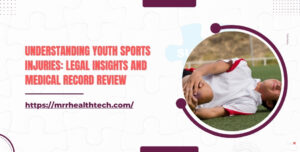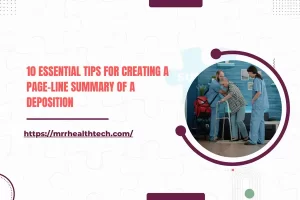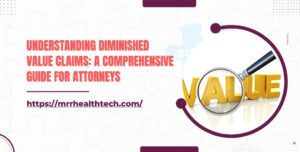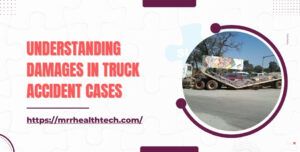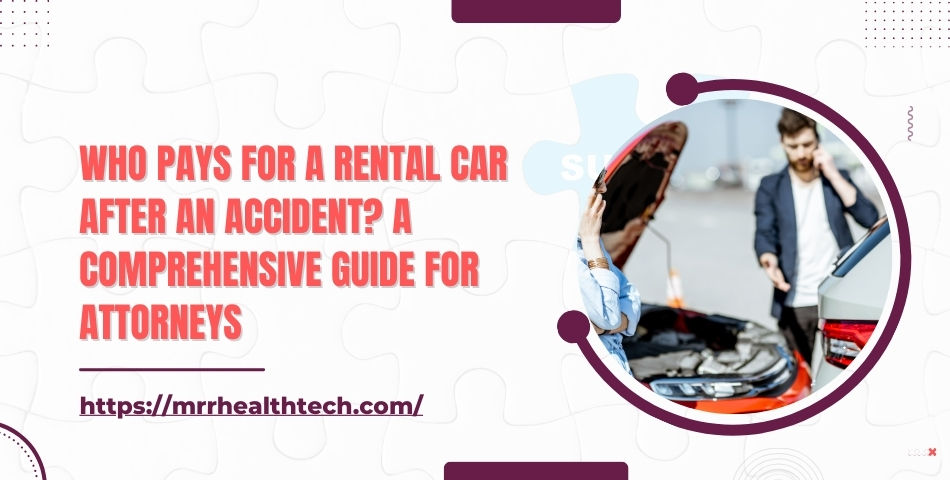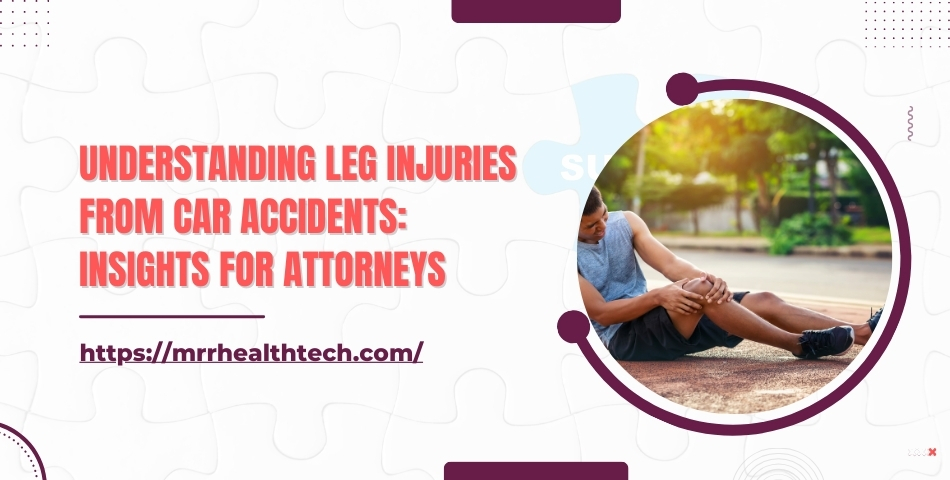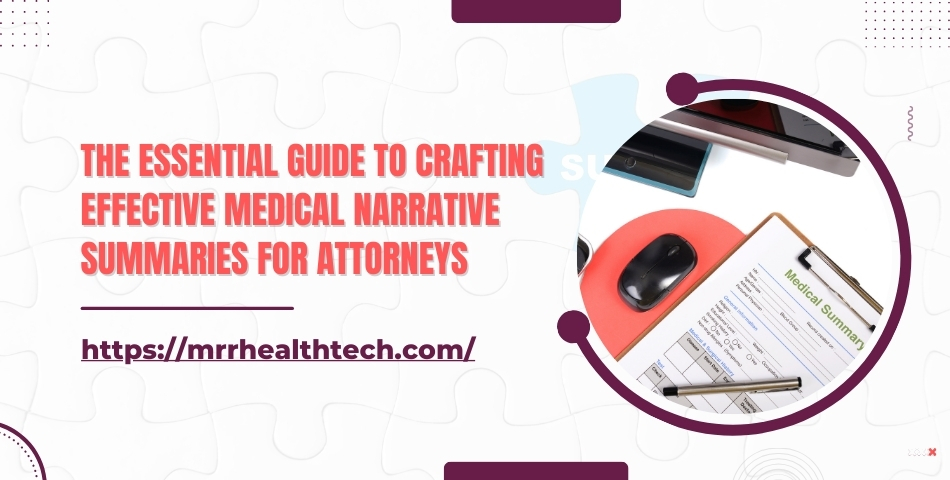
Carefully prepared medical narrative summaries play a pivotal role in the successful prosecution of personal injury cases. Throughout this article, you will learn step by step how lawyers should approach the writing of medical narrative summaries with attention to both the legal aspect and the impact of their cases.
Understanding Medical Narrative Summaries
Medical narrative summaries facilitate the presentation of complex medical information in a clear and intelligible manner for attorneys. They encapsulate significant portions of medical records and enable clients to document their medical history, treatment, and prognosis, all in one file.
Key Functions of Medical Narrative Summaries
- Medical History Clarification: Summaries assist lawyers and jury in getting the information on patient’s medical history.
- Impact Evaluation: They explain the manner in which injuries of illnesses have an impact of a client’s life and what surgery’s care is required in the future.
- Claims Support: Summaries serve as required evidence for submission to support planned on-going treatments and injury claims.
Why Medical Narrative Summaries Are Challenging
Navigating through dense medical records can be overwhelming. Attorneys often face the following challenges:
- Volume of Information: Vital information may be lost inside medical records with thousands of pages.
- Complex Terminology: Medical terms may be hard to comprehend for those who have no medical training.
- Time Constraints: There may not be enough time to check all records in detail. It may be difficult to find relevant information.
Key Components of an Effective Medical Narrative Summary
To create a compelling medical narrative summary, certain elements must be included:
Chronological Structure
• Timeline of Events: Narrate the patient’s medical history with a suitable introduction and conclusion.
• Highlight Key Events: Describe important medical incidents related to the case.
Clear and Concise Presentation
• Organized Layout: Divide content into sections with headings and subheadings.
• Simplified Language: Do not use jargon that the audience may not understand.
Detailed Medical History
• Comprehensive Overview: Add all previous injuries and treatments and any other medical condition that may be relevant.
• Contextual Information: Give information that will help understand the current medical issue.
The Relation of Needs to Injuries
• Linking Symptoms to Care Plans: Articulate how injuries impact one’s life and highlight the need for that care.
• Impact on Quality of Life: What range of activities can and cannot the client perform due to the medical condition?
The Objective Data Incorporation
• Evidence use: Incorporate lab tests, imaging studies and other objective findings to back up the claims made.
• Presentation of Data: Make the data reproducibly and easily interpretable to the readers and relevant to the case.
Friendly Format
• Easy Navigation: Make sure that the summary is such that readers can easily and quickly find the required information.
• Graphs and Charts: Use charts and graphs to represent the data in a complex way.
The Role of Professional Medical Record Review Services
Given the complexities involved in creating effective medical narrative summaries, many attorneys opt to work with professional medical record review companies. These services offer:
- Specialist in Medical Language: A professional will give better interpretation and summarization of the medical documentation.
- Saves Time: Documents can be done faster with great attention to details, which gives more time for attorneys to work on strategy of the case.
- Good Quality: Attorneys will be assured that there work is covered by experienced reviewers and met the legal requirements for the summaries.
Case Studies
Case Study 1: Personal Injury Claim
Overview of the Case: This is a case of personal injury where the patient sustained serious spinal injuries due to an automobile crash which led to him making huge medical payments and missing work.
Challenges:
- Affected person’s medical history which spans many years might be relevant to the case.
- Difficulty in determining how the injury translates to specific care needs.
Solutions:
- An outline of medical actions taken was provided in a comprehensive manner from the earliest to the latest.
- Claims were supported with objective info by using MRI and notes from the physical rehabilitation therapist.
Compensation: Due to doctors failing to minute the patient’s requirements properly the client was not only able to cover the damages to their health, but the economic losses as well.
Case Study 2: Medical Malpractice
Overview of the Case: A patient, after undergoing surgery, had complications that increased the time they needed to heal and seek additional medical attention.
Challenges:
• One of the main difficulties is around the order of events and the treatments undertaken.
• Establishing correlation between the surgery and complications thereafter is essential.
Solutions:
• A comprehensive narration was provided with the general idea of the surgery with timeline of recovery and complications after.
• Claims were supported and enhanced by invoking experts’ opinions substantiating the malpractice claim.
Compensation: The outcome of the case allowed the patient to pressure the negligent health care provider proving how strong the narrative detail correlated with the text’s context.
Conclusion
An attorney dealing with a personal injury case must draft an impressive medical narrative summary. If attorneys give emphasis on clarity, details, and the narrative structure, then they would make use of this to improve their case presentations. Besides, this work is made easy and efficient with the use of professional medical abstracting services because summaries will be both accurate and important. As the practice of law changes, so will the tools used and the most effective ways and means of applying them for the best interests of the clients’ so are for the lawyers.




